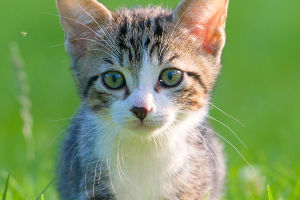Known as "flying flowers," butterflies are a class of very beautiful insects. Most of them are medium to large, with a wingspan ranging from 15 to 260 mm and two pairs of membranous wings.
The body is long and cylindrical, divided into three parts: head, thorax and abdomen. The body and wing membranes are covered with scales and hairs, forming various color markings.
There are about 20,000 species of butterflies recorded worldwide. The number of butterflies is the largest in the Amazon River Basin in South America, followed by Southeast Asia.
The most beautiful and ornamental butterflies in the world are mostly produced in Brazil, Peru and other countries in South America.
The species under international protection are mostly distributed in Southeast Asia, such as Indonesia, Papua New Guinea and other countries.
In the same area and at different altitudes, different temperature environments and different plant communities are formed, and many different butterfly populations are formed accordingly.
Butterflies are active during the day. Among the 158 families of Lepidoptera, there are 18 families of butterflies. Butterfly adults suck nectar or spoiled liquid, and most larvae are herbivorous. Larvae of most species feed on weeds or wild vegetation.
A small number of species of larvae become pests by feeding on crops. There are also very few species of larvae that become beneficial insects by eating aphids.
Some butterflies are really big. Some Alexandria birdwing swallowtails have a foot-long wingspan. In turn, the white-margined brown cricket butterfly has a minimum wingspan of about three-quarters of an inch.
If we put it on the finger, even if it spreads its wings to reveal its most glorious volume, people will think it is pitifully small.
Because butterflies are generally bright in color, large butterflies are very attractive, so special people collect all kinds of butterflies and make specimens for collection and research.
Some butterflies have colors that humans cannot see. Butterflies see the world from a completely different perspective than humans. It can also see colors outside the range of human vision, such as ultraviolet light. Many butterfly wings have UV pigments on them, so humans can't see much of the texture.
Butterflies have a pair of bright compound eyes, which are composed of more than 15,000 small eyes, which can observe the surrounding situation from multiple angles.
Butterflies can take off at any time if they find that things are not right. When birds are hovering around, butterflies will be the first to spot it.
Butterflies are temperature-changing animals. Their temperature mainly comes from the external environment, that is, radiant heat. These radiant heat are extremely important for the life activities of butterflies and are an important source of body temperature for butterflies.
When the temperature is right, butterflies can dance lightly. The optimum temperature for butterflies is generally 25-35°C. The temperature in the morning is low, and the body temperature of the butterfly is not enough, so the activity is very slow.
The color of a butterfly is directly related to the pigments contained in its scales. It is precise because of these scales that the butterflies are in different poses and with different expressions.
The scale powder on the butterfly body is arranged neatly like roof tiles and has a waterproof function, which can prevent it from being wet by rain.
The scales of butterflies are easy to fall off, so when they encounter spider webs, they can also break free relatively easily. Some butterflies use different colors and arrangements of scale powder to show certain patterns to achieve the effect of intimidation, warning or concealment.


